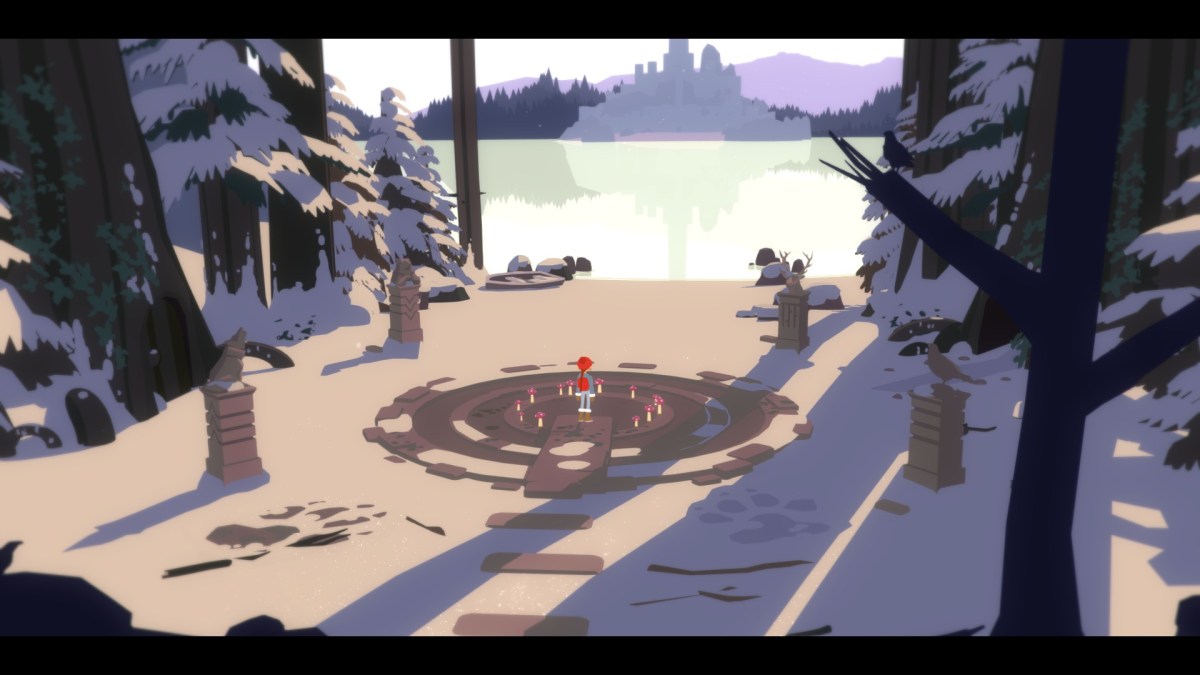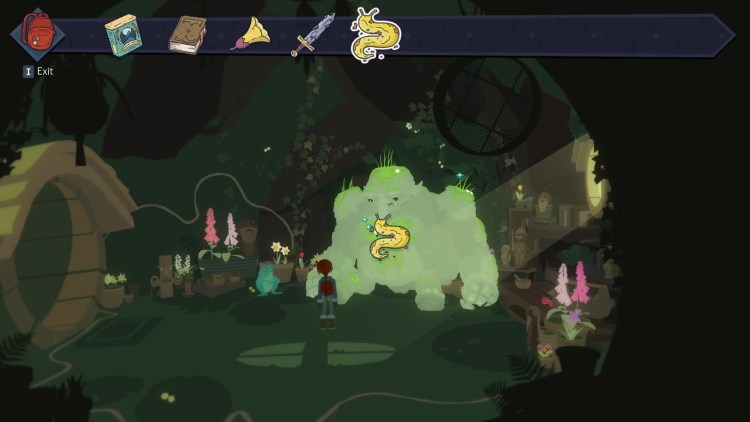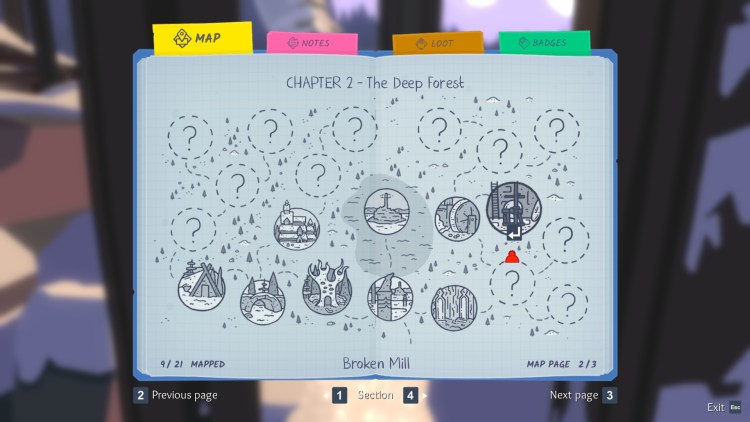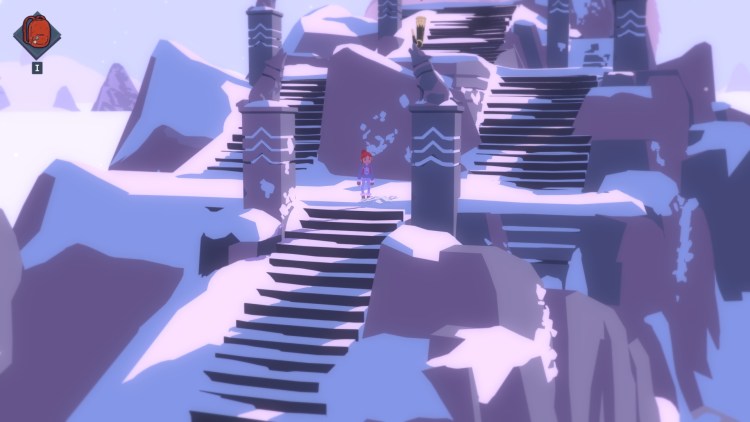As kids, we value folk tales for their ability to stoke the flames of our imagination. As adults, we recognize folk tales as teaching tools that explore and celebrate of the human condition. Each one tackles a tricky topic, with a fantastical spin that amplifies both the beauties and horrors of life. In this way, Röki is similar to the Scandinavian folk tales from which it borrows its setting. Behind the wondrous world of Polygon Treehouse’s point-and-click adventure is the heartfelt story of a family divided, and a lesson about trust, family, and strength.
Clocking in at around 12 hours, Röki is a beast of an adventure as far as narrative-driven indie games are concerned. You’ll spend the bulk of that time scouring the snow-laden hills of our world and beyond. Attentiveness and vigilance are heavily rewarded — anything could be the key to unlocking new sights and stories. Any less than an eagle eye for detail and you’ll be guaranteeing a few more hours of journal flipping, recalling past dialogue, and trialing item combinations. Fortunately, the beautiful world of Röki makes it easy to keep focus.
A walk through the woods
Deep in the woods resides a family of three: Tove, the elder sister; Lars, the younger brother; and their father, Henrik. Tove, whom you control, has stepped up to fill her mother’s shoes, having lost her some years prior. All is normal until the arrival of a giant monster rips their family, and their house, apart. As Tove, you pursue the monster into another dimension, where an array of mystical creatures stands between you and your family. Armed with pen, paper, and a backpack that would make Dora the Explorer jealous, you set off to rescue your brother.
In classic point and click fashion, each area features a plethora of interactables that you can collect or examine. The more you click, the more your item pool and knowledge base grows. Tove herself can’t be moved with the mouse alone, however, relying on traditional WASD instead. This combination would undoubtedly be frustratingly if Röki didn’t also include a keyboard-friendly means to interact. In fact, I found it more comfortable to continue my point-and-click adventure without any pointing or clicking.
For the exceptionally tough obstacles, you can also drag to combine items in your inventory to craft new tools. Again, everything can be done without the mouse, though without any way to quickly sift through your item trove. Tove’s journal, which logs your discoveries and clues, is equally conducive to your success. With the never-ending deluge of locations, tasks, and dialogue, the journal is an absolute lifesaver. Both inventory and journal are essential, but become ever more difficult to navigate as they become more bloated with items and information.
Of trolls and tomtes
Bookmarked in the journal is a map that outlines most locations in Röki’s magical themepark. Setting the game apart from its contemporaries is its non-linear puzzle solving and storytelling. The order of its primary narrative beats remain unaffected, but any supplementary events can be tackled in a few different orders. Naturally, this bleeds over into the exploration — certain locations will be visited earlier or later in the game.
Each location is a sight to behold. Röki’s art direction is its greatest asset; the prospect of seeing new sights is the ultimate motivation to press onward. However, in its quest for aesthetic cohesion, visual signifiers for the game’s myriad interactables are sorely lacking. Pressing the F key causes all interactables in the environment to flash, and the second half of Röki is defined its overuse. In many instances, key items are hidden in the most unassuming of places. By the time I had reached the game’s third act, I was spamming the key in every location I entered.
Whether through diligent searching or ardent spamming, your inventory will be packed with items. One at a time, each one is sacrificed to the puzzle gods on your quest for more story bits. Puzzles themselves are relatively simple, but the items required for their solutions may not be so easy to come across. Paying attention to dialogue and extra close attention to the environment is crucial. Clues come in many shapes and forms, but Röki’s charming characters and stunning environments are more than encouraging. Though, the aforementioned reliance on the highlight feature is omnipresent.
Balancing act
Puzzles, for the most part, still give you plenty of room to breathe. You’re free to explore and tackle other locations as you see fit, save for a few story-heavy moments. Rarely are you locked into a puzzle, forced to contend with it until it’s solved. This remains true until Röki’s third act — a rough puzzle gauntlet that’s sure to sap every ounce of your puzzle-solving power. Beyond this, the complexity of these later puzzles expose the awkwardness of Röki’s interface.
Dragging and dropping items, manipulating them in your inventory, and other actions take up an absurd amount of time. The constant opening and close and maneuvering of my inventory and its contents halved my progress speed. And with so many puzzles, it’s hard not to feel like the slow rate of progression is no longer worth the reward. The second act, home to Röki’s signature non-linear puzzle solving and exploration, remains the perfect blend of challenges and rewards.
That is not to say that Röki’s more linear segments are bad. The game uses these moments to focus in on its story, to great effect. The tale of Tove and her family is wholly relatable, and beautiful in its representation. Röki’s visual storytelling and solid writing kept me immersed in the world and invested in its characters. But nothing is as captivating as the feeling of discovering new areas and creatures. Freely exploring the world of Röki, piecing together the story of the forest — this emergent storytelling is best suited for the adventure.
Through the looking glass
Röki preserves the magic and message of the folk tales it draws inspiration from. Expect a moving story, gorgeous environments, and classic, point-and-click puzzling to tie it all together. It’s a fairly lengthy adventure that chooses to spend its time building up its detailed world, and less time trying to reinvent the wheel. Its gameplay is quite uninspired, but doesn’t do much to dull the story’s shine.











Published: Jul 27, 2020 01:45 pm